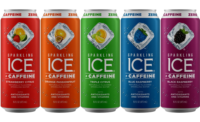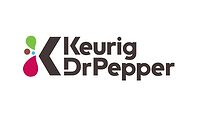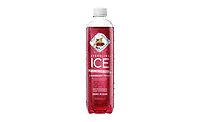Bottled water category holds steady for second consecutive year
Still, sparkling water contribute to stable growth

Human bodies are comprised of about 70 percent water, which allows the body to deliver oxygen, manufacture hormones, convert food for digestion and much more. As consumer preferences continue to trend toward better-for-you options, industry experts are seeing the connection between consumers wanting healthy-halo beverages and the continued growth of bottled water sales.
For the second consecutive year, the International Bottled Water Association (IBWA), Alexandria, Va., and New York-based Beverage Marketing Corporation (BMC) announced that bottled water is the No. 1 beverage in the United States, by volume.
BMC attributes U.S consumers’ thirst for bottled water to several factors:
- Many consumers recognize it to be healthy, safe and convenient
- It is suitable for consumption at any time of day
- Relatively inexpensive when compared with other ready-to-drink beverages
- Lack of unhealthy ingredients
The market research company tracked 2018’s first quarter performance of bottled water segments by volume. In the first quarter of 2018, total bottled water volume was up by an estimated 5.5 percent as compared with the first quarter of 2017, BMC’s August U.S. Bottled Water Topline report states.
(Individual brands)
| DOLLAR SALES | % CHANGE VS. PRIOR YEAR | MARKET SHARE | % CHANGE VS. PRIOR YEAR | |
| Private label | $2,784,307,968 | 9.9 | 22.9 | 0.9 |
| Dasani | $2,784,307,968 | 0.6 | 9.0 | -0.4 |
| Aquafina | $1,068,049,408 | 1.0 | 8.8 | -0.6 |
| Nestlé Pure Life | $857,521,664 | -5.6 | 7.1 | -0.8 |
| Glacéau smartwater | $836,419,392 | 1.0 | 6.9 | -0.3 |
| Category total* | $12,133,594,112 | 5.6 | 100.0 | — |
Source: Information Resources Inc. (IRI), Chicago. Total U.S. supermarkets, drug stores, mass merchandisers, gas and convenience stores, military commissaries, and select club and dollar retail chains for the 52 weeks ending Aug. 12.
PET still water saw a 5.9 percent increase in the first quarter of 2018, and domestic sparkling and imports grew 34.7 percent and 5.9 percent, respectively, during that same timeframe, it adds.
“The bottled water category has been experiencing robust growth since the early ‘90s, driven primarily by consumer demand for healthier refreshment,” says Gary Hemphill, managing director of research at BMC.
New York-based IBISWorld experts echo similar sentiments about the popularity of bottled water. “Demand for industry products has shown some growth, mainly attributable to consumers turning away from substitutes such as juice and sodas with high sugar levels,” the company said in its July “Bottled Water Production in the US” report.
The bottled water category has grown 2.2 percent in 2018 alone, the report states.
“Bottled water’s rocket-like rise in popularity coincides with pronounced shifts in consumer preferences for refreshment and rehydration,” said Michael C. Bellas, BMC chairman and chief executive officer, in a statement.
“As the quintessential portable and affordable beverage, bottled water introduces new usage and occasion habits,” he continued. “Suitable for consumption at any time of the day or night, and not necessarily in need of being kept ice cold, bottled water simply is the preferred beverage not only for consumers aiming to reduce caloric intake or lessen artificial sweetener usage but also for consumers of all kinds.”
A year at a glance
As the bottled water category continues to see growth across all segments, experts note the demand comes from consumers in search of healthier alternatives to carbonated soft drinks (CSDs).
In 2017, bottled water volume grew to 13.7 billion gallons, a 7 percent increase over the previous year, BMC said in a statement. Bottled water sales now total $18.5 billion, an increase of 8.8 percent. Per capita consumption saw a 6.2 percent increase from the previous year, exceeding more than 42 gallons of bottled water.
(Individual brands)
| Dollar Sales | % CHANGE VS. PRIOR YEAR | MARKET SHARE | % CHANGE VS. PRIOR YEAR | |
| Private label | $529,047,296 | 9.5 | 19.1 | -1.0 |
| LaCroix | $442,853,184 | 37.6 | 16.0 | 2.6 |
| Sparkling Ice | $401,106,560 | 5.5 | 14.5 | -1.3 |
| Perrier | $277,928,384 | 9.0 | 10.1 | -0.6 |
| Polar | $160,565,328 | 19.6 | 5.8 | 0.2 |
| Category total* | $2,762,779,392 | 15.0 | 100.0 | — |
Source: Information Resources Inc. (IRI), Chicago. Total U.S. supermarkets, drug stores, mass merchandisers, gas and convenience stores, military commissaries, and select club and dollar retail chains for the 52 weeks ending Aug. 12.
BMC predicts that bottled water will reach 50 gallons per capita within the next few years, as well as reaching as much as $23.9 billion in sales by 2022.
The water segment has picked up steam in recent years, driven by trends around flavoring, fortification and carbonation, creating a healthy beverage with an indulgent feel, states Chicago-based Information Resources Inc.’s (IRI) April report on New Product Pacesetters.
Water now competes on a whole different level, the report states, noting the category competes with soft drinks, juices, energy drinks and sports drinks, and other beverages.
According to IRI data, dollar sales for the overall bottled water category were $16.4 billion for the 52 weeks ending Aug. 12, in total U.S. multi-outlets and convenience stores. Convenience/PET bottled water accounted for $12.1 billion, while seltzer/sparkling/mineral bottled water accounted for $2.7 billion during that same timeframe.
Convenience/PET increased 5.6 percent, while seltzer/sparkling/mineral bottled water experienced 15 percent growth in the U.S. multi-outlets for the 52 weeks ending Aug. 12, IRI data states.
Data from Chicago-based Mintel also points to steady growth. “The bottled water category’s growth continued through 2017 with a 35 percent leap in sales over the past five years,” states Mintel in its February report titled “Bottled Water – US.” “Lead by consistent double-digit growth in the sparkling water segment, sales increased across all three segments (convenience/PET, sparkling, and jug/bulk still water) contributed to overarching success.”
Looking at the category as a whole, BMC notes consistent growth for all segments in 2017: domestic non-sparkling water increased 5.5 percent, domestic sparkling water increased 37.7 percent and imported water increased 9.2 percent.
Although the category has seen growth in all segments, BMC attributes retail PET water for much of the market’s growth. Domestic non-sparkling water represented 96.1 percent of total volume in 2017, it says in its August report.
Seltzer water also gained ground in volume and market share in 2017. The segment saw an increase of 10.2 million gallons to 201.6 million gallons, with a market share of 75.7 percent, BMC data indicates. Additionally, seltzer is expected to increase at a compound annual growth rate (CAGR) of 5.8 percent by 2022, it says.
“The primary growth driver over the years has been the retail PET segment, essentially single-serve bottles of non-carbonated water,” BMC’s Hemphill says. “That said, all segments of the category are experiencing growth. More recently the category has begun to evolve and we’ve seen exceptional growth from sparkling water.”
As a retail PET segment example, Purchase, N.Y.-based PepsiCo Inc., was fairly underrepresented in the bottled water category, BMC’s August report states. The company delved into the category and aggressively pushed its artistically inclined LIFEWTR brand, which became increasingly popular in channels like convenience stores, it says.
Based on IRI data, PepsiCo’s convenience/PET still water value was nearly $1.1 billion for the 52 weeks ending Aug. 12, in total U.S. multi-outlets.
Impending trends
In its August report, BMC predicts that domestic sparkling and imported water will remain a top player and should increase their shares of the U.S. bottled water market by volume, within the next five years.
Based on an anticipated CAGR of 4.8 percent, domestic retail PET water should account for 69.5 percent of total bottled water volume by 2022, the same as 2017, the report says. This potentially could slightly lag the market, it adds.
BMC also predicts domestic sparkling’s share to rise from the 2.1 percent in 2017 to 4.6 percent in 2022, while imported water should see a 0.4 percent increase in the same timeframe.
Although water of all types is expected to see continued success in the market, some experts note that category growth eventually could begin to taper. “Though the category benefited from the perpetuation of better-for-you trends and concerns over sugar content in previously favorited drinks, sales may be beginning to taper,” Mintel’s report states.
“Innovation is happening throughout the beverage industry, as brands make moves to develop new flavors, increase functional offerings and borrow benefits across the category to appeal to new consumer sets,” it continues. “As such, bottled water brands will face more competition from outside the category than ever.”
Despite being the fastest growing segment, flavored and unflavored sparkling waters still possess a relatively low reach among consumers, the report says. While a large source of growth can come from current consumers drinking more, to reach their full growth, brands should focus on broadening their consumer base to consumers who are slower to adapt to the products such as Generation X, it explains.
To perpetuate strong growth, water brands will need to broaden their consumer base and educate consumers on what their biggest differentiating claims actually mean, Mintel states. Keeping language and labeling simple, but packaging unique will help appeal to a wide variety of consumers, it adds.
FIJI Water, a brand of Los Angeles-based The Wonderful Company LLC, has innovated its packaging to resonate with consumers. “Fiji broke ground in a number of ways, from its much-imitated packaging (with an interior graphic visible through the liquid) to its ability to travel in sophisticated venues without offering a glass packaging,” BMC’s report says.
IBISWorld also notes the popularity of FIJI Water, but in a different way. “Similarly, a growing number of consumers are demanding imported bottled water that comes directly from remote locations,” the report says.
“Brands like FIJI Water increasingly are popular among health-conscious bottled water drinkers, which has resulted in growing demand for foreign-bottled products.”
Although category stalwarts will have to continue to innovate their products and packaging in order to keep up with consumer trends, BMC experts predict a bright future for bottled water. “While some segments are growing faster than others, we think it is likely we will continue to see growth in all segments of the category in the years ahead,” Hemphill says. “... We believe the future is bright. Bottled water is the perfect refreshment beverage.” BI
Looking for a reprint of this article?
From high-res PDFs to custom plaques, order your copy today!






